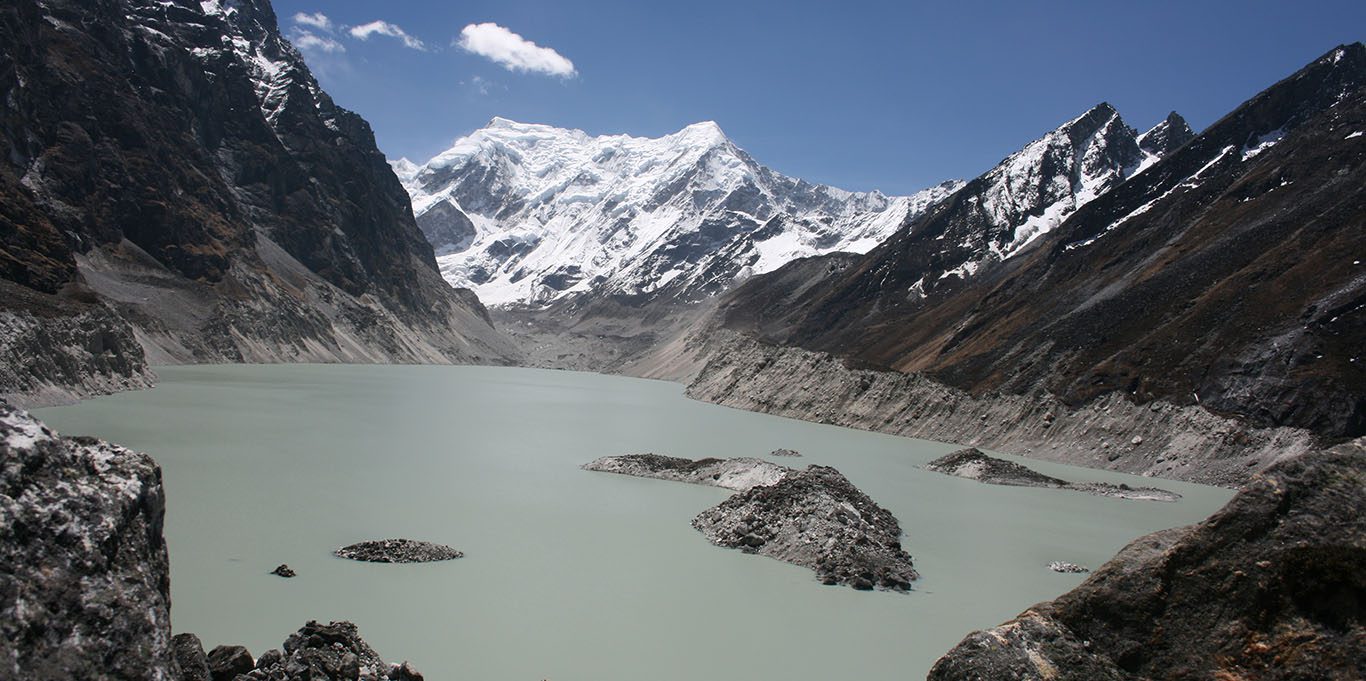In News:Glacial lakes rise as glaciers retreat
2.Critically analyse the role of glacial lakes in the context of climate change-induced glacier retreat. Discuss the potential risks associated with Glacial Lake Outburst Floods (GLOFs) in India.
Glacial lakes are formed primarily due to the melting of glaciers, which has been significantly accelerated by climate change. As glaciers retreat, they leave behind depressions that fill with meltwater, leading to the formation of these lakes.
They have profound implications for hydrology, ecosystems, and disaster risks.
● Formation and Expansion: According to the Centre Water Commission report, the Himalayan region has witnessed a notable increase in glacial lakes, with a reported 10.81% area expansion from 2011 to 2024.
● Ecological importance: These lakes serve as critical freshwater reservoirs, supporting downstream ecosystems and regulating river flows during dry seasons.
● Indicators of Climate Change: The rapid formation and expansion of glacial lakes are clear indicators of climate change impacts in the Himalayas.
Potential Risks Associated with GLOFs
While glacial lakes provide essential ecological benefits, they also pose significant risks through phenomena known as Glacial Lake Outburst Floods (GLOFs).
● Mechanisms of GLOFs: GLOFs occur when water accumulated in glacial lakes is suddenly released due to the failure of moraine dams or ice walls.
● Factors contributing to this failure include:
- Increased water volume from rapid glacier melt.
- Heavy rainfall that can overwhelm natural dam structures.
- Structural weaknesses in moraine dams that develop over time due to erosion or melting.
● The frequency of GLOFs has increased significantly, with studies indicating that over 70% of recorded GLOF events occurred in the last 50 years. Notable incidents include the 2013 Kedarnath disaster and the recent South Lhonak Lake GLOF in Sikkim. Such events underline the urgent need for risk assessment and management strategies.
● The NDMA has identified 190 glacial lakes at “very high” risk for GLOFs across Himalayan states. In Himachal Pradesh, glacial lakes nearly doubled from 562 in 2019 to 1,048 in 2023.
● GLOFs can cause sudden flooding, devastating infrastructure, agricultural land, and human settlements downstream. Approximately 15 million people are at risk from such events.
Glacial lakes are vital for hydrology but pose significant risks through GLOFs threatening downstream communities. Comprehensive monitoring and proactive disaster management strategies are essential to mitigate climate change impacts on these critical water sources.
PYQ
- Bring out the relationship between the shrinking Himalayan glaciers and the symptoms of climate change in the Indian sub-continent. 2014
- How does the cryosphere affect global climate?2017
- How will the melting of Himalayan glaciers have a far-reaching impact on the water resources of India?2020
Source:

